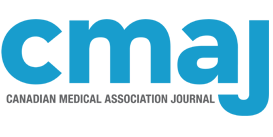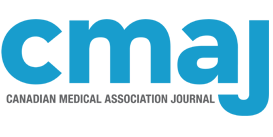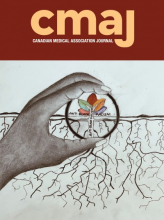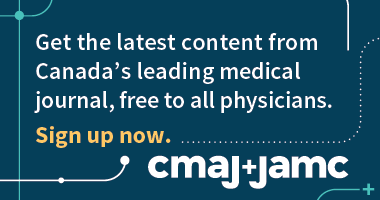The upcoming revision of the Canadian Medical Education Directives for Specialists (CanMEDS) provides an opportunity to address a framework that is permissive of racism.
Western medicine was founded upon the exploitation, medical experimentation and dehumanization of free and enslaved Black people.
To address health inequities attributable to racism, antiracist praxis requires the explicit application of interrelated and essential concepts: antiracism and antioppression, cultural safety, structural competence and critical consciousness.
Antiracism should be a foundational competency for the 21st century physician.
The Canadian Medical Education Directives for Specialists (CanMEDS) medical education competency framework has been widely adopted throughout the world.1 A multi-institutional project is currently underway to revise CanMEDS, with an updated framework planned for 2025. This time of reflection provides an opportunity to analyze the relevance of the current CanMEDS competencies, particularly with respect to topics of health equity, social justice and racism.
Western medicine has been a space of exclusion and exploitation of Black providers and patients alike. Medical experimentation, dehumanization and anti-Black racism have been foundational underpinnings of Western medicine.2 In not being explicitly antiracist in their conception, the CanMEDS roles and competencies are by default, white-centred. We critically examine the CanMEDs roles through an antiracist lens and show that they may be inadvertently contributing to a professional culture that is permissive of or possibly perpetuates racism.
“Respecting and valuing diversity” is an explicit expectation of the CanMEDS collaborator role (which encompasses collaboration with patients, communities and other health care professionals), yet Black and Indigenous patients, learners and physicians continue to experience interpersonal racism in the form of harassment, discrimination and abuse.3 Black and Indigenous patients are less likely to be engaged in shared health decisions and more likely to experience unwanted medical procedures.4 An absence of authentic collaboration permits active racialization within medical institutions and harms patients who are Black, Indigenous and racialized.
Communication is a critical skill for health care providers. Racial and gender concordance in care have been shown to affect these positive outcomes, and it is suggested that shared lived experience and effective communication promotes trust and mutual understanding. Despite this, Black learners have been penalized for connecting with Black patients as their authentic selves.5 Evidence has also suggested that Black learners have been systematically penalized for perceived differences in language and communication skills. This devaluation of the performance of Black trainees is now recognized as a structurally racist practice that persists in medical education.6
Physicians and medical learners are encouraged to be socially accountable and to advocate for patients within the clinical environment and to the populations they serve. However, Black and racialized physicians specifically are surveilled and critiqued for the type of advocacy efforts in which they engage.5,7 Arguably, advocacy, as defined by the academy, is white-centred and continues to be that which is palatable only to the white gaze, so that advocating against everyday racism in society is often viewed as “too political” or inappropriate for health care providers to engage with, and those who do are seen as “troublemakers.”
Scientific scholarship and clinical evidence has historically centred whiteness, and racism continues to be present in the research enterprise.8 A relative dearth of data speaks to the lived experiences of Black people when it comes to health, with current evidence failing to account for the diversity among Black people in Canada. Medical education has erroneously emphasized race as a biological construct and a risk factor for disease when race is merely a marker for racism and other intersecting oppressions that contribute to illness. Research on the health of Black people in Canada is underfunded and, when undertaken, often fails to involve Black communities. The continued exclusion of Black scholars and partners in clinical research permits the development of epistemic bias in medical knowledge and the normalization of Black erasure in practice.9 The absence of Black images of skin manifestations of systemic disease in textbooks and failure to validate pulse oximetry on Black patients can lead to clinically important errors and misdiagnosis in practice.
The CanMEDS role of professional is perhaps the most difficult with respect to the perpetuation of racism. Society’s perception of the “medical professional” has been influenced by the glorification and status of figures like William Osler,10 who was also arguably an agent of racism, segregation and marginalization. The medical communities’ ability to rationalize — or simply disregard — troubling aspects of Osler’s person highlight that professionalism does not include being actively antiracist.
In 2016, a white surgeon in Grand Prairie, Alberta, hung a noose on the door of an operating room where Black and Indigenous physicians worked. Although the use of a symbol of racist violence is racist, it took health organizations and regulators 5 years to fully investigate this assault. The investigative process failed to include expert witnesses on racism or the history of racist symbols. It also failed to engage racialized physicians harmed by this episode in a respectful way. The hanging of a noose was determined to be unprofessional — as it was seen as intended to intimidate colleagues — but it was not considered racist.11 This provides further evidence that our community is not actively antiracist, and thus creates unsafe work and regulatory environments for Black and racialized physicians, learners and patients. The centrality of the white experience in the construct of medical professional will continue to perpetuate racism if our profession is not explicitly and intentionally antiracist.
A substantial lack of Black physician representation exists in leadership. This contributes to the pervasiveness of anti-Black racism in the health care system. On an individual level, this allows racial bias toward patients (e.g., embodied in ignorant beliefs about Black patients’ experiences of pain) and students (e.g., suggestions that their presence in the academy arises from equity initiatives and not merit). For Black clinicians, a lack of Black mentors and peers contributes to feelings of isolation, which reduces sense of belonging, permits harassment and increases the risk of burnout for Black providers.
“Medical expert” integrates all the CanMEDS roles “applying medical knowledge, clinical skills, and professional values in their provision of high-quality and safe patient-centred care.” However, if each role is permissive of racism, the medical expert role is, by default, racist in several dimensions and a failure to recognize this contributes to unsafe and ethically questionable learning and clinical environments.
It is time for all physicians in Canada to reckon with the uncomfortable truth that racism is a foundational underpinning of our profession.12 The project to revise CanMEDS presents an opportunity to take explicit, intentional steps to ensure that the medical profession learns to be antiracist. The future of antiracism praxis may incorporate the following essential, interrelated (yet distinct) concepts: antiracism (a process, a systematic method of analysis and a proactive course of action);13 antioppression (which recognizes other marginalized groups and intersectional identities); 14 cultural safety15 and structural competence16 (to build on historical understanding of discrimination and recognition of systemic barriers to care); and critical consciousness17 (which enables the translation of these approaches and levels of awareness into action). Work is underway to develop solutions to be applied in practice upon which we will elaborate in future articles.
A reorientation of the neutral physician identity — to one that is action oriented and committed to the pursuit of health equity, improved patient outcomes and justice for all — is required (Figure 1). We will not be successful in growing a safe, effective and inclusive workforce unless we infuse antiracism into all CanMEDS roles. Antiracism must be a foundational competency for the 21st century physician.
Looking through the lens of anti-Black racism. Antiracism as a foundational competency as envisioned by artist, Elizabeth Dayo.
Image courtesy of Elizabeth Dayo
Acknowledgements
The authors thank Elizabeth Dayo (University of Calgary medical student) for her beautiful accompanying artwork, Dr. Nicole Johnson for providing supporting references and feedback on the work concept and Dr. Arno Kumagai for his perspective on “critical consciousness,” which will be further developed in future works.
Footnotes
Competing interests: None declared.
This article has been peer reviewed.
Contributors: Kannin Osei-Tutu conceived the original work and drafted the initial manuscript. Whitney Ereyi-Osas and Priatharsini Sivananthajothy drafted the initial manuscript. Doreen Rabi revised the initial manuscript for important intellectual content and was instrumental in the reframing of the work. All authors contributed to the design, drafting and revisions of the final manuscript, gave final approval of the version to be published and agreed to be accountable for all aspects of the work in ensuring that questions related to the accuracy and integrity of the work have been appropriately investigated and resolved.
Author’s note: Doreen Rabi is a white, invisibly disabled, mid-career, medical leader and clinician-researcher focused on the negative health impacts of structural and cultural oppression.
This is an Open Access article distributed in accordance with the terms of the Creative Commons Attribution (CC BY-NC-ND 4.0) licence, which permits use, distribution and reproduction in any medium, provided that the original publication is properly cited, the use is noncommercial (i.e., research or educational use), and no modifications or adaptations are made. See: https://creativecommons.org/licenses/by-nc-nd/4.0/












